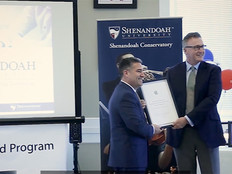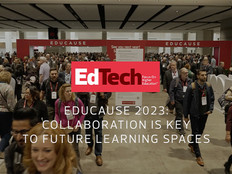Classroom
EDUCAUSE 2021: Identifying Opportunities to Improve Technology Access
California State University’s IT units were able to mobilize quickly in response to the pandemic in part because communications were already a strategic priority before COVID-19. Through the Office of the Chancellor, they coordinated outreach to their nearly 500,000 students across 23 campuses, secured equipment, expanded licensing agreements, and mobilized on-the-ground loading and device distribution.
In summer 2020, university leadership partnered with EDUCAUSE on a survey to better understand students’ technology access. Their feedback is helping to inform Cal State’s decision-making and allows campuses to be deliberate in addressing inequities, said Kate Miffitt, director for innovation in the Office of the Chancellor.
“For those of us in it, it really felt like technology came to the forefront. We had a lot of this infrastructure in place, but it always felt like it was running in the background,” Miffitt said. “The pivot to remote learning happened at a scale that revealed a lot of inequities that were hidden by students having access to campus Wi-Fi or computing labs on campus.”
Although students who had trouble with connectivity got creative with getting online by heading to their nearest McDonald’s, Starbucks or their parents’ place of work, the stress started to build up over time, said Jenay Robert, a researcher for EDUCAUSE.
“Even though students were finding these creative solutions, they were also encountering some really strict syllabus policies, which creates a lot of anxiety for them,” she said. “As we are creating these equitable learning environments, it’s not so much about the specific technology we choose, but really about being flexible with students, understanding their needs and meeting them where they are.”
Another issue that EDUCAUSE will continue to examine is equity within the higher education workforce and the way that institutional factors at each school affect digital transformation and the student experience.
“We have to take into consideration things like the staffing resources and capabilities that exist within that particular institution,” said Mark McCormack, senior director of analytics and research at EDUCAUSE. “Those factors impact technology adoption. They really shape and influence how that technology gets integrated into the institution and whether the technology is successful in doing what it’s intended to do.”
Find more EDUCAUSE 2021 coverage, including interviews and advice from higher ed experts.
Participants
- Kate Miffitt, Director for Innovation, Office of the Chancellor, California State University
- Jenay Robert, Researcher, EDUCAUSE
- Mark McCormack, Senior Director of Analytics and Research, EDUCAUSE
Video Highlights
- A survey from California State University and EDUCAUSE unearthed inequities in student technology access.
- The survey found a need for higher education instructors to be more flexible and compassionate with students about their access and connectivity limitations.
- Institutions can use student feedback and engagement to identify opportunities to improve their technology design experience.





